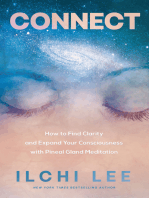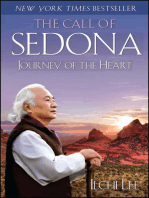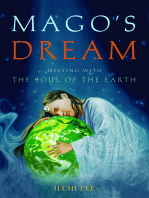
The Jesus Controversy: Perspectives in Conflict
John Dominic Crossan, Luke Timothy Johnson, Werner H. Kelber
3.78
9 ratings2 reviews
The current controversy over the historical Jesus and his significance for both scholarship and religious belief continues to rage inside and outside the academy. In this volume, three distinguished New Testament scholars debate the historical, textual, and theological problems at the core of the controversy.
John Dominic Crossan offers a theological defense of the historical reconstruction of Jesus, arguing that if Christian faith is not founded on the historical Jesus, it will fall into Docetism. Luke Timothy Johnson counters this thesis, arguing that the biblical Christ and his presence in the life of believers is the proper focus of Christian faith. Werner Kelber takes issue with both views. Placing them in the broader context and history of Christian hermeneutics, he seeks to overcome the alternatives that govern the controversy.
John Dominic Crossan is Professor Emeritus of Religious Studies at De Paul University.
Luke Timothy Johnson is Robert W. Woodruff Professor of New Testament and Christian Origins at Emory University.
Werner H. Kelber is Turner Professor of Biblical Studies at Rice University.
GenresReligion
112 pages, Hardcover
First published November 1, 1999
Book details & editions
18 people want to read
About the author

John Dominic Crossan85 books241 followers
John Dominic Crossan is generally regarded as the leading historical Jesus scholar in the world. He is the author of several bestselling books, including The Historical Jesus, Jesus: A Revolutionary Biography, The Birth of Christianity, and Who Killed Jesus? He lives in Clermont, Florida.
John Dominic Crossan was born in Nenagh, County Tipperary, Ireland in 1934. He was educated in Ireland and the United States, received a Doctorate of Divinity from Maynooth College in Ireland in 1959, and did post-doctoral research at the Pontifical Biblical Institute in Rome from 1959 to 1961 and at the École Biblique in Jerusalem from 1965 to 1967. He was a member of a thirteenth-century Roman Catholic religious order, the Servites (Ordo Servorum Mariae), from 1950 to 1969 and was an ordained priest in 1957. He joined DePaul University in Chicago in 1969 and remained there until 1995. He is now a Professor Emeritus in its Department of Religious Studies.
Ratings & Reviews
What do you think?
Rate this book
Write a Review
Friends & Following
Create a free account to discover what your friends think of this book!
Community Reviews
3.78
9 ratings2 reviews
Sally
1,477 reviews · 50 followers
Follow
April 16, 2015
Three papers on the issue of the historical Jesus. J. D. Crossan's lecture contains several very interesting points, particularly relating to the gospel of Mark. L. T. Johnson's lecture is less appealing, being a surprisingly negative and condescending dismissal of any Christian investigation into Jesus as a historical figure, indeed of any other viewpoint than as Jesus as the risen Christ. The third portion, by W. H. Kelber, is the most valuable in giving not only a critique of the other lectures but also a historical and theological context for the whole debate. I enjoyed this book.
religion-christianity
1 like
Like
Comment

Jonathan Zachary
16 reviews · 2 followers
Follow
June 16, 2016
This book contains three essays by three scholars of three separate viewpoints. In order to unpack each essay I have attempted to summarize their main arguments and conclusions. Much of what each author had to say has been left out for brevity's sake.
The quest for the Historical Jesus, over the last three hundred years, has been undertaken by many people of many different professions, backgrounds, and persuasions; and has yielded as many results. Should an embarrassing lack of academic consensus lead us to abandon the quest? John Dominic Crossan thinks otherwise. In his essay, "Historical Jesus as Risen Lord" Crossan argues that a faith must explore its historical origin generation after generation in order to sustain its relevancy. Without that connection to a past reality, he believes, the Jesus of tradition would be only myth. To Crossan, faith is the product of an ongoing dialogue between present and past, a process in which the search for the grounded-in-reality Historical Jesus plays a vital role. And so we ask ourselves, year after year, what does it mean to be a Christian in our own day and age? What, in light of recent events, can the history of our faith teach us about this present reality?
This, however, is a view not shared by Luke Timothy Johnson, who in his responsive essay, "The Humanity of Jesus: What's at Stake in the Quest for the Historical Jesus" questions the motives of such historians and the significance of their results. Johnson suggests that, due to the wide disparities between the great number of Jesus reconstructions, the quest so far has taught us only that an accurate portrait of the Historical Jesus remains virtually inaccessible. He sees in each quester's version of Jesus both a reflection of their own preconceptions and a betrayal of their underlying theological motivations. For many, he believes, it is simply an attempt to free the Christianity of today from the super-naturalism inherent in its tradition. Johnson goes on to describe the historical method as a means of judging the authenticity of a given deed or saying of Jesus as received through tradition, but argues that it ultimately remains incapable of telling us anything significant about who Jesus actually was. The person, or character of Jesus is what holds significance for the faith, he argues, and although the gospel narratives may not always agree on what Jesus said or did, or on the order and detail of events, they all attest certain aspects of his character. From this perspective, the stories and sayings of the gospels are less concerned with communicating details and more concerned with telling us something about Jesus' character, as humble servant and merciful Lord, and it is this character that we seek to imitate in our own lives. Therefore, for Johnson, the Biblical Jesus, the Jesus revealed within tradition is more real than any of the multifarious Historical Jesus's of late.
Both Crossan's and Johnson's arguments become the subject of scrutiny in Werner H. Kelber's essay, "The Quest for the Historical Jesus: From the Perspectives of Medieval, Modern, and Post-Enlightenment Readings, and in View of Ancient, Oral Aesthetics." In it, Kelber begins by summarizing the Christian Bible's global impact over the last two thousand years. This is his attempt to put into perspective our relatively recent, modern-reading of the Bible characterized by a very literal and representational interpretation. Throughout the Middle Ages, he points out, each passage of scripture could be interpreted in four distinctly different ways: there was the literal sense, the allegorical sense, the moral/ethical sense, and the spiritual sense. Because the Bible was understood as the Word of God, it was seen to have an unlimited potential for meaning and mystery. Kelber goes on to explain how, during the Enlightenment, the literal reading became the primary reading, and the fourfold sense gave way to the single sense. Modernity's tendency to equate truth with fact and the rebirth of history as a scientific enterprise resulted in a reevaluation of the Bible that revealed a less-than-divine compositional story. He believes that the quest was justified, and is justifiable today, by the knowledge that the gospel accounts contain factual inconsistencies and therefore represent a fractured historical retelling. Kelber goes on to say, however, that he is doubtful as to whether the historical method will ever be able to provide a satisfying answer in this quest. He admires Crossan's meticulous categorization of the oral traditions behind the gospels, but points out that as a traveling teacher Jesus would have repeated himself over and over again, reworking his message on each occasion for the specific audience at hand. Therefore, in Kelber's mind, a single original saying of Jesus is irretrievable, and would be less representational of the Historical Jesus than a plurality of many sayings that are each equally original. He also doubts whether historians outside the realm of biblical scholarship would ever employ some of the far-reaching tactics performed by many in their overzealous search for the Historical Jesus.
On the other hand, Kelber is slower to discount the validity of the quest as a whole, and questions Johnson's idea of a unified Biblical Jesus. He asserts that modern scholarship has illuminated subtle but foundational differences in the way each gospel narrative understands who Jesus was and the significance of his death, so any attempt to unite them into one Christology simultaneously sacrifices some of what the individual authors were trying to say. To Kelber, the plurality of Jesus within the biblical tradition, as with the oral tradition, can neither be fully harmonized nor is it readily reducible. To simplify this pluralism by either method only further distorts the already blurry portrait of Jesus painted by our existing sources. Looking back to the Middle Ages, Kelber reminds the reader that for much of Christian history the pluralistic nature of scripture was regarded not as a crisis to be resolved, but rather was seen as an excitingly complex world of interpretative possibilities.
religion
===































